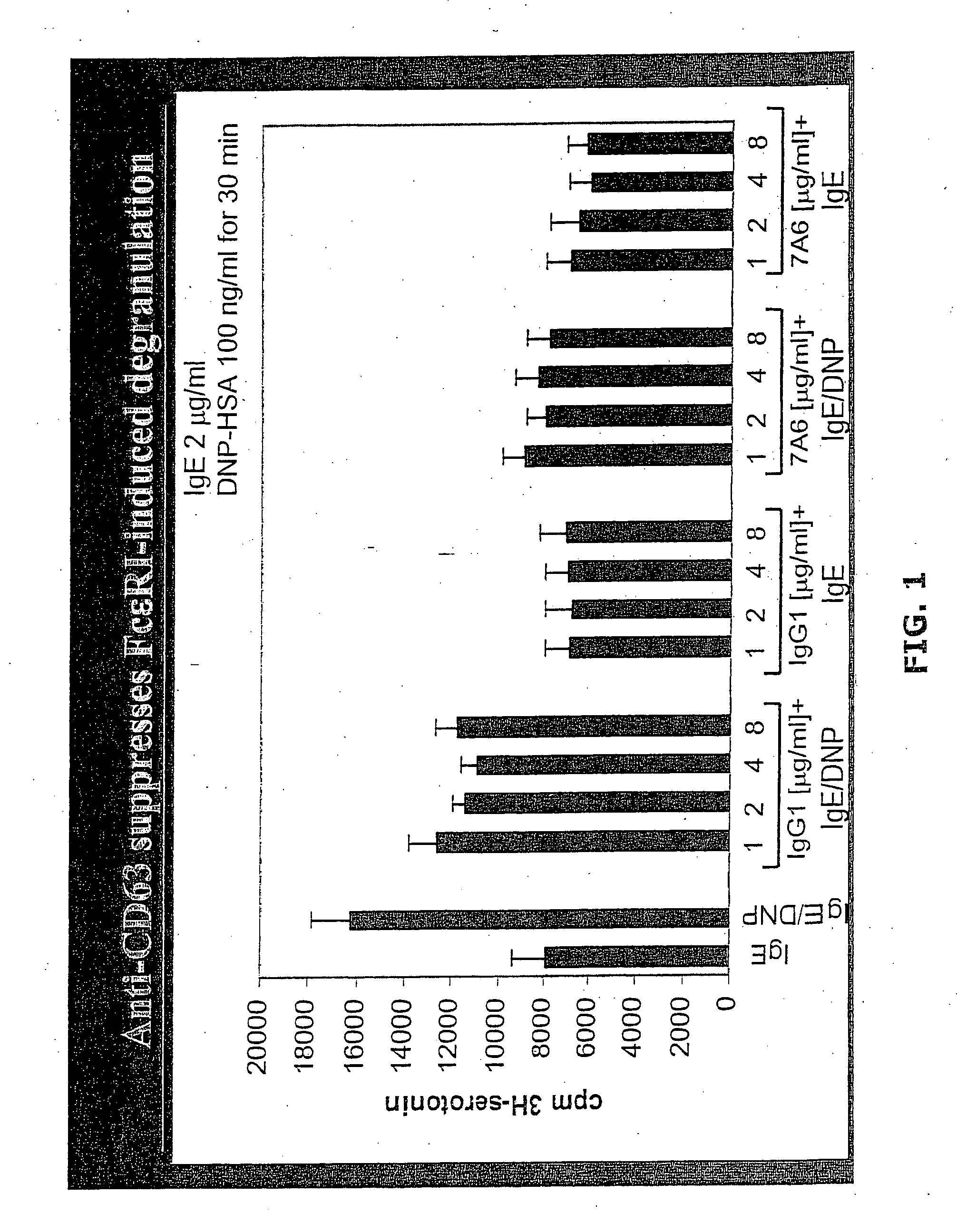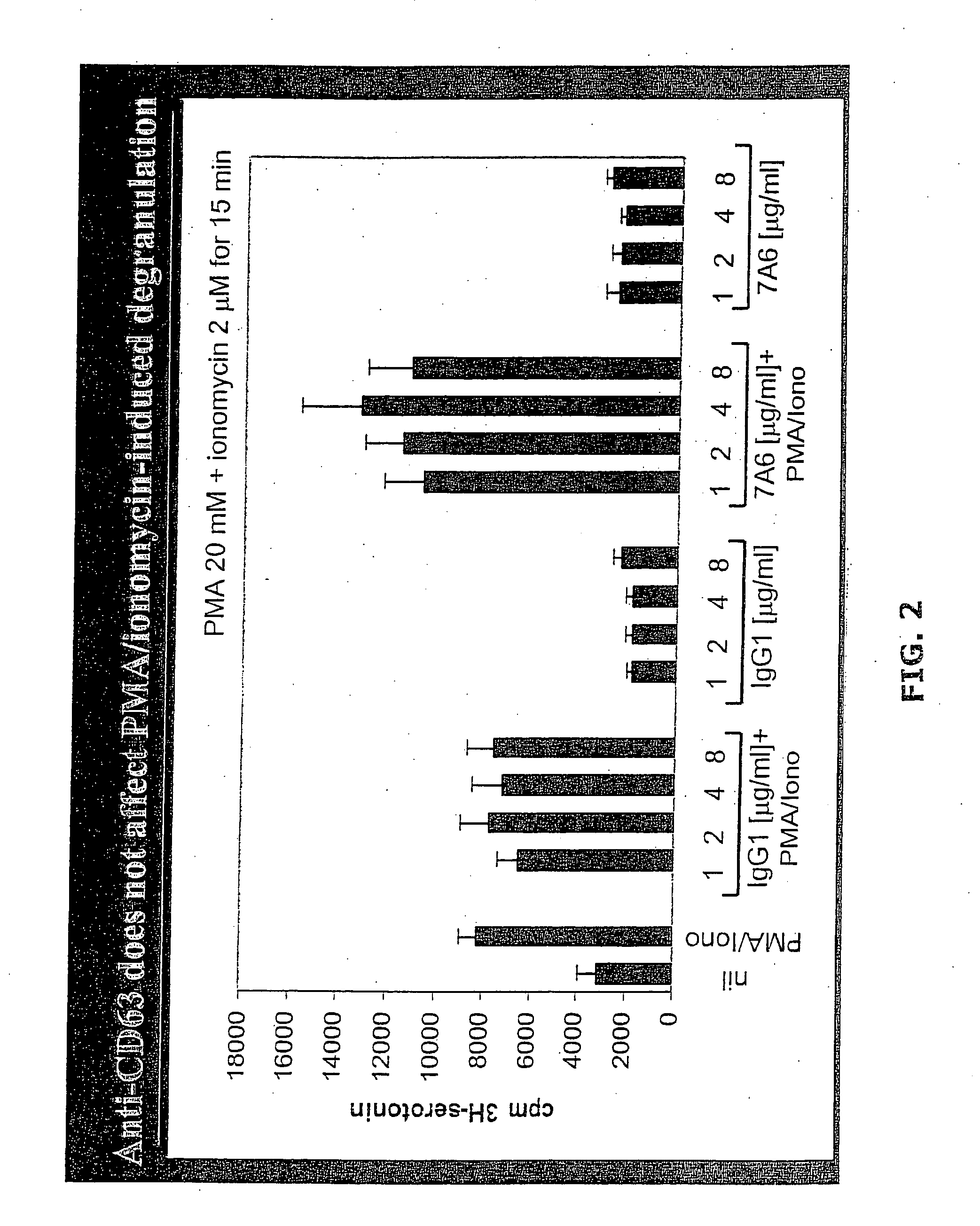Anti-CD63 antibodies and methods of use thereof
a technology of anti-cd63 antibodies and antibodies, applied in the field of anti-cd63 antibodies, can solve the problems of side effects of therapeutic agents, frequent doses, gastrointestinal complications, etc., and achieve the effect of improving the therapeutic capacity to modulate the function of these cells and reducing the passive cutaneous anaphylaxis respons
- Summary
- Abstract
- Description
- Claims
- Application Information
AI Technical Summary
Benefits of technology
Problems solved by technology
Method used
Image
Examples
examples
Immunizations, Fusions, and FACS
[0082] Female BALB / c mice (4-8 weeks old) were immunized intraperitoneally with 25×106 RBL-2H3 cells (which most closely resemble immature rat mucosal mast cells) emulsified in complete Freund's adjuvant or 50×106 RBL-2H3 cells in phosphate buffered saline (PBS). Mice were boosted intraperitoneally after 2 weeks with 40×106 RBL-2H3 cells emulsified in incomplete Freund's adjuvant or in PBS. For the final immunizations, animals were injected with 20-40×106 RBL-2H3 cells intraperitoneally at day −4 (fusion=day 0) and intravenously at day −3. Spleen cell preparations were fused with either NS-1 or SP2 / 0 myeloma cells in polyethylene glycol and plated onto normal BALB / c spleen feeder cells. To enhance the development of the hybridomas, S. typhimurium mitogen (Ribi ImmunoChem Research, Inc., Hamilton, Mont.) was included in the culture medium from days 0-10. Hybridoma supernatants were tested after day 14 by flow cytometry for binding to RBL-2H3 cells us...
PUM
| Property | Measurement | Unit |
|---|---|---|
| concentration | aaaaa | aaaaa |
| concentrations | aaaaa | aaaaa |
| concentrations | aaaaa | aaaaa |
Abstract
Description
Claims
Application Information
 Login to View More
Login to View More - R&D
- Intellectual Property
- Life Sciences
- Materials
- Tech Scout
- Unparalleled Data Quality
- Higher Quality Content
- 60% Fewer Hallucinations
Browse by: Latest US Patents, China's latest patents, Technical Efficacy Thesaurus, Application Domain, Technology Topic, Popular Technical Reports.
© 2025 PatSnap. All rights reserved.Legal|Privacy policy|Modern Slavery Act Transparency Statement|Sitemap|About US| Contact US: help@patsnap.com



